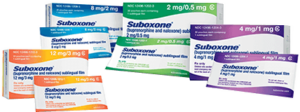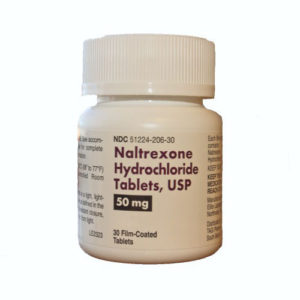- What is Medication Assisted Treatment for Opioid & Alcohol Use Disorder?
- Components of MAT:
- Psychosocial
- MAT (Mat) For Alcohol Abuse Disorder
- More about Medications to Assist Alcohol Use Disorder
- Naltrexone
- Vivitrol
- Disulfiram (Antabuse)
- MAT (Mat) For Opiate Addiction
- Medication
- Buprenorphine:
- Naltrexone
- Methadone:
- Side effects of Methadone can include
- Goals for Medication Assisted Substance Abuse Treatment
- Goal 1: Withdraw from the Alcohol or Problem Opioid.
- Goal 2: Begin Recovery
- Goal 3: Continuing with Medication Assisted Substance Abuse Treatment
- A Goal for All Stages – Staying (or Returning to) Course
- GOAL 4: Live Addiction Free
- MAT Gives Substance Abuse Patients the Best Chance to Recover and Go Forward with Healthy Lives
- The MAT Program for Long-Term Sobriety Works
- References
What is Medication Assisted Treatment for Opioid & Alcohol Use Disorder?
Has alcoholism or an opiate addiction turned someone you care about into “somebody else”? Is there something that can be done to help your loved one overcome this addiction? The good news is that there is actually more tools than ever before for professionals to assist individuals struggling with a substance use disorder get on the road long-term rehabilitation.
Medication-assisted treatment (MAT) is one way to help those with opioid addiction recover their lives. There are three, equally important parts to this form of treatment:
- Medication
- Counseling
- Support from family and friends.
These three parts work together to help people recover. Medication-assisted treatment may be helpful to your friend or loved one.
Medication assisted treatment (MAT) is a treatment strategy that combines FDA-approved medications, counseling and therapy to help opioid-dependent patients recover and maintain healthy lives.
Studies have shown that MAT greatly increases a patient’s chance to recover completely from opioid dependency. The evidence shows that the best outcome and greatest chance for ongoing recovery from OUD comes from combining medication and patient-specific therapies in a holistic approach to treatment. Combining therapy and medication together in a plan that is tailored to each patient’s specific needs produces a better outcome than either medication or therapy-based treatment alone can achieve.
Components of MAT:

Psychosocial treatment1 begins by assessing the patient’s specific needs. This assessment is done by a team of medical providers prior to MAT intake. Some specific needs that will be assessed and, if necessary addressed include
- Behavior patterns
- Substance abuse history
- Other psychiatric disorders
- Support networks such as family and friends
Psychosocial treatment can include:
• Individual and/or group therapy
• Family therapy
• Inpatient treatment
• Intensive outpatient treatment
• Referral to community services
• 12-step programs
• Peer support
While an individual may not need every resource available, each patient’s treatment plan should be tailored to the specific needs of the patient and monitored to ensure that the treatment is updated according to the progress made by the patient.
Some programs are tailored to a specific demographic. For instance, young people almost certainly need family therapy and peer support while adults may need housing and educational support to successfully transition back into the workforce.
MAT (Mat) For Alcohol Abuse Disorder
Effective MAT for alcohol dependence has been shown with the FDA approved medications :
- Naltrexone (brand names ReVia, Depade)
- Injectable naltrexone for extended-release (VIVITROL) Disulfiram (Antabuse) and Acamprosate Calcium (Campral).
More about Medications to Assist Alcohol Use Disorder
Naltrexone
Naltrexone is an opioid antagonist2, which means that it occupies the opioid receptors in the brain without activating them; and blocks opioids from attaching to the receptors.
the opioid receptors are involved with alcohol dependence. Thus, the blocking action of naltrexone to the opioid receptor is thought to reduce the pleasurable effect of alcohol, and, in turn, reduce alcohol consumed in one sitting and reduce heavy alcohol consumption days
Vivitrol
VIVITROL was FDA approved in 2006.3 Although naltrexone itself has been used in oral form since 1994 for alcohol dependence (1985 for opioid addiction), VIVITROL is a long-acting formulation administered as a once-monthly IM injection
Disulfiram (Antabuse)
Antabuse was the first medication approved by the FDA for alcoholism (in 1948)4. Antabuse interferes with the metabolizing of alcohol and causes the side effects like:
- flushing
- nausea
- chest pain
- difficulty breathing
- headache
- confusion
- blurred vision if alcohol
MAT (Mat) For Opiate Addiction
Through the prescription of medications, a board certified addiction doctor can help curb opioid cravings and reduce withdrawals.
Starting with the initial detox, MAT medications like buprenorphine are able to greatly increase comfort.
MAT treatment must include a counseling component to give the patient a good chance to achieve life-long recovery.
Medication
There are three FDA-approved medications which are used in combination with psychosocial treatment for OUD. Ideally, the prescribing doctor will prescribe the medication best suited to the individual’s needs. Because OUD is a chronic condition, some patients may need to continue use of the medication indefinitely.
Some patients need to switch from one medication to another in the course of treatment. This could happen for a number of reasons, such as illness, pregnancy or an adverse reaction to the medication a patient is taking. There should be periodic assessments of whether continued use of the prescribed medication is indicated.
Buprenorphine:
Buprenorphine is a partial agonist, which means it expels existing opioids from the opioid receptors in the brain and blocks other opioids from attaching, but it only partially binds to the opioid receptors. Buprenorphine prevents withdrawal for up to 72 hours. Though it does have a limited euphoric effect, it does not have the full effect of an opioid such as heroin or painkillers. Also, there’s a ceiling on the euphoric effect so that, even with increased dosage it will not produce a stronger euphoric effect. While there is some risk of buprenorphine abuse, it is limited to those who don’t already have OUD.
Buprenorphine is available in a wider variety of settings than Methadone, including
- Doctor’s offices
- Community hospitals
- Health departments
- Rehab programs
- Correctional facilities
A qualified physician must undergo special training in order to prescribe buprenorphine.
If you’re taking other medications or have another health condition you must talk to your prescribing doctor before taking buprenorphine. You must avoid use of alcohol or sedatives while taking buprenorphine as this could cause an overdose. Always talk to your doctor before taking another medication while you are on buprenorphine.
There hasn’t been enough research available to safely rule out risks for pregnant and breastfeeding women. If you’re on buprenorphine maintenance you should speak to your doctor if you become pregnant.
Buprenorphine is available as a pill, a film placed in the cheek or under the tongue, as an injection or as an implant. It is frequently combined with naloxone to block the euphoric effect and decrease the risk of misuse. FDA-approved brands include
- Bunavail (buprenorphine and naloxone) film
- Cassipa (buprenorphine and naloxone) film
- Probuphine implant
- Sublocade – and extended-release injection of buprenorphine (BUP-XR)
- Suboxone (buprenorphine and naloxone) film
- Subutex (buprenorphine and naloxone) film or tablet
- Zubsolv (buprenorphine and naloxone) tablets
Naltrexone
Naltrexone, commonly prescribed under the brand name Vivitrol, is an antagonist, which means it fully blocks the opioid receptors and produces no euphoric effect. Because of this, it’s mainly used as a relapse-prevention drug and cannot prevent withdrawal symptoms. Patients must be opioid-free for at least 7-10 days before taking Naltrexone. Naltrexone is used for alcohol dependence as well as OUD.
You must seek medical detox before beginning Naltrexone treatment if you’ve taken an opioid drug within the past 7-10 days.
If a patient relapses while taking Naltrexone, it blocks the euphoric feeling completely. However, Naltrexone can lower tolerance so there’s an increased danger of overdosing from taking another drug while on Naltrexone. Patients must avoid taking opioids, drinking alcohol or using sedatives or tranquilizers while on this medication.
Naltrexone side effects can include
- Vomiting or nausea
- Diarrhea
- Headaches
- Nervousness or insomnia
- Joint or muscular ache
If you experience any of the above side effects while taking Naltrexone you should consult your doctor. Dosage may need to be adjusted or you may need to switch to another medication. Do not stop taking Naltrexone without consulting your healthcare provider.
Naltrexone may also cause:
- Injection site reactions
- Liver injury
- Allergic pneumonia
If you have signs or symptoms of the above, consult your medical provider immediately.
Naltrexone is available as an intramuscular injection or by mouth. While the use of Naltrexone is limited to relapse prevention and not as an aid to withdrawal, it can be prescribed by any doctor who can prescribe medications, which makes it widely accessible.
Methadone:
Methadone is a full agonist, which means it binds fully to the opioid receptors in the brain. It prevents withdrawal symptoms

Because methadone is itself an opioid, it must be dispensed in specially licensed clinics. After a period of time during which a patient stabilizes and adheres to the recommended dosage the patient may be allowed to take the daily dose at home between clinic visits.
Length of treatment varies from patient-to-patient, but generally must continue for at least one year. Once you and your doctor feel that you are ready to go forward without methadone, you have to be tapered off the drug under medical supervision to avoid withdrawal. Methadone treatment may continue indefinitely.
Side effects of Methadone can include
• Difficulty breathing
• Chest pain or racing heart
• Rash or swelling of the face or throat
• Faintness or lightheadedness
• Hallucinations or confusion
If you experience any of the above you must discontinue use and contact your doctor or go to the emergency room.
Pregnant women can safely take Methadone. The benefits of continuing your treatment outweigh any minimal risk to the baby. If you are thinking of discontinuing Methadone treatment because of a pregnancy you should speak to your doctor.
Methadone is available in liquid (Methadose) or tablet (Dolophine).
Goals for Medication Assisted Substance Abuse Treatment
Goal 1: Withdraw from the Alcohol or Problem Opioid.
This stage is also called detoxification or detox.
- Stop taking the opioid drug.
- Work with the doctor to select a medication.
- Reflect on whether use of other substances is interfering with recovery.
- Receive medical treatment to improve overall health. Begin counseling to improve health, behavior , and coping skills.
Goal 2: Begin Recovery
- Replace unhealthy behaviors with healthy behaviors. For example, join a support group, find a new hobby, or look for a job.
- Learn how to avoid relapse.
- Work to improve or repair relationships. Learn to recognize and avoid triggers (places or activities that cause drug cravings to come back).
- Work with the doctor to adjust the medication and dose as needed.
Goal 3: Continuing with Medication Assisted Substance Abuse Treatment
- Learn to take medication at home (if permitted by program, State, and Federal rules), and gradually taper off over the course of months and/or years.
- Get random drug tests.
- Keep a normal routine. For example, work or go to school, go to support groups or counseling, build relationships, and have fun.
- Schedule regular visits with the doctor to check dose levels and to get refills.
- Continue to avoid triggers and relapse.
- Get random drug tests.
A Goal for All Stages – Staying (or Returning to) Course
Many people in treatment relapse one or more times before getting better and remaining drug free. Each relapse is a setback, but it does not mean failure. People who relapse can continue with treatment and achieve full recovery.
A person can prevent relapse by staying away from triggers, for example, by avoiding former drug-use hangouts and staying away from friends who use drugs. Another way to prevent relapse is to guard against impatience or overconfidence.
A person who makes these statements (or even thinks them) might need to return to an earlier goal for recovery:
- “This treatment isn’t working!”
- “I thought I wasn’t supposed to feel cravings.”
- “I’m cured! I can control it if I only use with my friends.”
- “There’s no way I can relapse!”
- “I can stay away from drugs by myself.”
- “When I got high, I had so much fun! I never had problems.”
GOAL 4: Live Addiction Free
- Keep strong habits of healthy behavior.
- Check in with the doctor or substance abuse treatment provider every 1 to 3 months.
- Continue to draw strength from family , friends, and support groups.
- Continue in counseling for other issues, as needed.
MAT Gives Substance Abuse Patients the Best Chance to Recover and Go Forward with Healthy Lives
The opioid epidemic is growing steadily nationwide and along with growing numbers of people suffering from OUD, opioid overdoses are claiming more lives every day. We have a national emergency. Because of this, government health officials are working hard to ensure that MAT services are widely accessible in all regions.
The MAT Program for Long-Term Sobriety Works
Many of the men and women who have succeeded in staying alcohol and drug-free for longer than 12 months had sincerely pursued recovery before, but triggers and underlying issues resulted in a relapse.
If you or somebody you love suffers from OUD, there’s hope. Whatever situation you find yourself in—even if you live in a rural area and don’t think there are any resources available where you live, you can access help to recover and go on with your life. Health care professionals and the U.S. Department of Health and Human Services are working hard to ensure that every single person who suffers from OUD can access MAT. If you are having difficulty finding help, click on this link for help locating MAT resources near you.


